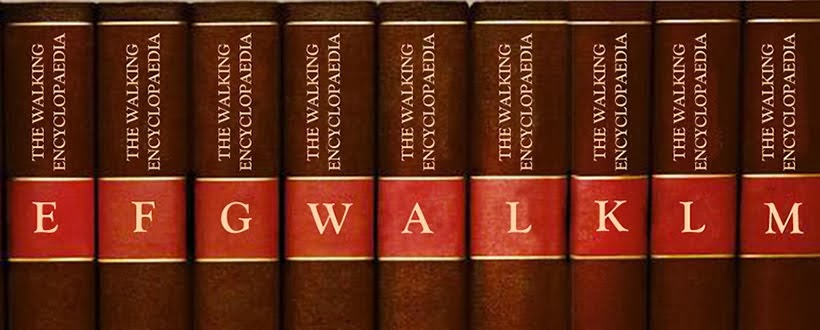There were still some last minute preps - Andy finished Alec Finlay's submission, "distant hills are blue" - exhibited for the first time here - and I did some ironing for the first time in 15 years!
 |
| The Alec Finlay Install |
 |
| ironing... |
 |
| Bridget Sheridan - Scarf |
 |
| Waterwalk - Path of Least Resistance 2013, Wall drawing |
But the night really opened with Paths of Variable Resistance - Tim Knowles' Solo Exhibition consisting of 3 of his works. On entry, the visitor was greeted by a huge sprawling line drawing (accompanied by 4 beautiful photographs) - the gps mapped result of 20 walkers unknown route through a valley.
The work, entitled Path of Least Resistance
really introduced the viewer to the idea behind most of Tim's work - that being the removal of human control - in this instance, the route was directed by a set of rules and the landscape itself as walkers headed down the valley guided by the rhythms and undulations of the landscape.
 |
| Tim and WE contributor John Levett |
 In, Tracking Shots, 2013 Tim presented a previously unexhibited series of small photographs taken whilst tracking the routes of participants in the Waterwalk of Path of Least Resistance. Each of the 37 displayed images is a seemingly innocuous representation of landscape - yet on closer inspection, you could see evidence of presence - folded grass, broken twigs, dislodged or depressed moss, paths in the bracken, foot prints, broken rocks or turned stones. Presented in a trail for the viewer to walk along - again, the invitation was to imagine yourself following, or tracking, someone else's walk.
In, Tracking Shots, 2013 Tim presented a previously unexhibited series of small photographs taken whilst tracking the routes of participants in the Waterwalk of Path of Least Resistance. Each of the 37 displayed images is a seemingly innocuous representation of landscape - yet on closer inspection, you could see evidence of presence - folded grass, broken twigs, dislodged or depressed moss, paths in the bracken, foot prints, broken rocks or turned stones. Presented in a trail for the viewer to walk along - again, the invitation was to imagine yourself following, or tracking, someone else's walk.And finally, the dual showing of the epic Kielder Forest Walk - an 8hr single channel HD video depicting Tim's exhausting attempt to walk in a straight line through the forest for 8hrs. Once again, Tim transports us to the site and scene of his walking endeavour, this time with the more direct use of video. The sheer exertion of the endeavour shines through this work - the movement of the apparently body-mounted camera allied with the breathless and spontaneous vocalisation is extremely evocative, and at times claustrophobic as the landscape starts to close in.
Working with Tim Knowles all week for this installation was a bit of a revelation as, beyond the quality of the work, it was really instructive to see an artist push the boundaries and work with such minute precision in order to exhibit his work in the best possible way.
Paths of Variable Resistance is a must see exhibition.
www.timknowles.co.uk/
 The Walking Encyclopaedia was greeted with unanimous appreciation, as we opened the doors to a feast of documentation of walking practices.
The Walking Encyclopaedia was greeted with unanimous appreciation, as we opened the doors to a feast of documentation of walking practices. We opened with a performance from flautist Gavin Osborne, who accompanied encyclopaedia contributor Michael Mayhew's film To ArT – a WaLk - reimagining the way a flute can sound and in the process giving the sense of a breathless immersive ambience - or as Gavin puts it - a hyper-graphic score. When combined with Michael's everyday overlooked imagery of the things he notices on the way from his home to his workplace, but we might ordinarily miss, the sound of Gavin's flute adds an ethereal quality to the journey.
There was a little talk of the legacy of the project - especially in terms of creating a permanent repository for the submitted works - it will be interesting to see if that might be possible.




No comments:
Post a Comment